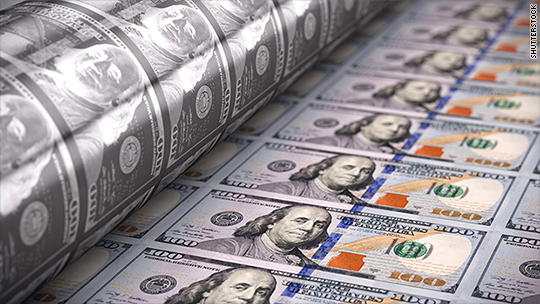Central banks in mature and liberal economies have consistently advanced an image of exclusively technocratic establishments and kept political relations to a minimum. The main and single mandate received by most of them, namely to keep inflation under control, meant that their attention focused more on economic theories and models that would help them take the best decisions to achieve that objective. Maintaining their independence was, therefore, a pre-requisite to monetary policy decisions unswayed by election cycles or vested political interests.
The second hallmark of central banks throughout their history was their neutral umpire status. In other words, their policy did not intend to favor certain categories of debtors, as the banking system was the transmission belt of monetary policy.
The challenges, however, facing central banks during and after the crisis have made many to question the two above-mentioned functions. Firstly, politicians from the US to Romania or Turkey, confronted with the social tensions caused by the crisis and fearing a new recession, increasingly felt the urge to interfere in or exert pressure on central banks` actions. Central banks` successful resistance varied with the country.
Equally important, if not more so, was the decision by some central banks to intentionally give up on the second function, that of a neutral umpire. Conducting quantitative easing programs by massive buys of bonds issued by sovereign players first and non-sovereign later created a privileged class. The issuers no longer needed to turn to investors for funding as the central bank was a generous and trustworthy enough creditor.
The impact of this discriminatory central bank behavior had multiple and manifold effects: economic, social, and also ethical. The money supply created by central banks has failed to “lift all boats” evenly.
Firstly, they generated a moral hazard with regard to government behavior. Overnight governments felt significantly less motivated to adjust their deficits and indebtness as long as they had the central bank`s pledge to finance that debt. Small wonder that, under these conditions, budgetary adjustments have been so slow to happen.
Secondly, businesses found it easier to get hold of funding at costs that did not accurately reflect their risk profile. Many times, though, cheap money did not have a trickle-down effect in terms of wage growth and they mainly benefited shareholders, either by dividend distribution, or by share buy-backs.
Thirdly, the collapse of central bank interest rates to negative real or nominal rates caught a large portion of the population unawares. These are people who chose the most straightforward methods of managing their savings, through bank deposits or other low-risk investments. They were and are the losers of the new set-up arranged by the main central banks.
 On the other hand, the wealthiest minority, “the smart money” as they are dubbed, had the necessary funds to pay experts for their know-how on investments and get access to asset classes with higher yields than that publicly available. It is not by chance that large capital holders have many times been the recipients of cheap financing by companies where they were direct or indirect shareholders. According to the Wall Street Journal, more than 85% of the assets of the wealthiest 1% Americans are in financial assets such as stocks, bonds or stakes in private companies. As a result, they benefited to the fullest from the stock market increases over the last years, as well as from bond yield drops (which pushed prices on secondary market). The value of their financial assets has jumped by 72% since the recession.
On the other hand, the wealthiest minority, “the smart money” as they are dubbed, had the necessary funds to pay experts for their know-how on investments and get access to asset classes with higher yields than that publicly available. It is not by chance that large capital holders have many times been the recipients of cheap financing by companies where they were direct or indirect shareholders. According to the Wall Street Journal, more than 85% of the assets of the wealthiest 1% Americans are in financial assets such as stocks, bonds or stakes in private companies. As a result, they benefited to the fullest from the stock market increases over the last years, as well as from bond yield drops (which pushed prices on secondary market). The value of their financial assets has jumped by 72% since the recession.
The WSJ also noted that the bottom half of US households, as measured by wealth, have just recently recovered their 2007 – 2009 losses and, adjusted for inflation, they are 32% poorer than in 2003. The top 1% of households, however, are twice as rich as they were in 2003.
Basically it was those who used the leverage effect to maximize the value of capitals held in companies who had most to gain from the extremely loose policy conducted by central banks. Morover, they had access to sophisticated methods of wealth preservation, unlike most people.
The WSJ pointed out in an analysis the astronomical prices for high-end homes. Two decades ago selling a house for $100 M was unthinkable. Now, in 2019 alone in the US four homes sold for more than $100 M with another one expected to trade by the end of the year. On the other hand, a connaisseur told me that premium Japanese whisky which ten years ago would sell for $100, now sells for $300. Luxury goods and homes “inflation” against zero inflation for the basket of goods indicates that the money printed by central banks inflated only the sail of a minority of boats and lead to growing inequality in advanced economies.
Under these conditions, the new found appetite of the main central banks to resume quantitative easing should worry and present us with an unorthodox question.
What if the predicted quantitative easing, instead of subsidizing governments and businesses, would fund the population so as to drive consumption, inflation, limit social polarization and last but not least, restore the central bank neutrality with which it treats economic players?



